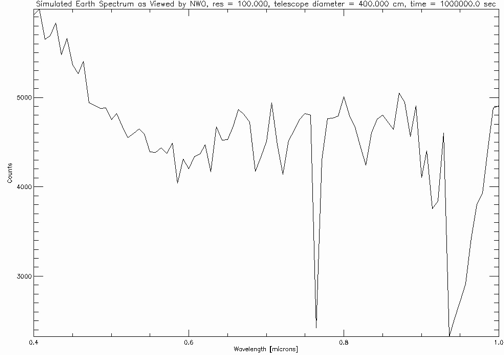
[ Spectroscopy ] [ Photometry ]
Spectroscopy with New Worlds Observer
Spectroscopic analysis from the starlight, reflected off the planets, will give insight on the composition of the atmosphere.
New Worlds is capable of detecting the A-band of O2 (761 nm) in the visible, which is a direct indication for having plant life. We can detect as little as 2% oxygen in an atmosphere, which means that we can detect a planet in the early stages of plant production!
New Worlds will also be able to detect the H2O line at 960 nm. This indicates the presence of water, which is necessary for all life as we know it.
 |
| This is a simulated spectrum of an Earth-like planet, taken at 10 pc, with 4-m telescope, an exposure time of 1000000 sec, and a resolution of 100. The O2 line at 761nm is prominent, as well as the H2O line at 960nm. |
[ What Causes Spectral Lines? ]
[ How Do Astronomers Utilize Spectroscopy? ]
[ Can Spectroscopy Be Used To Detect Life? ]